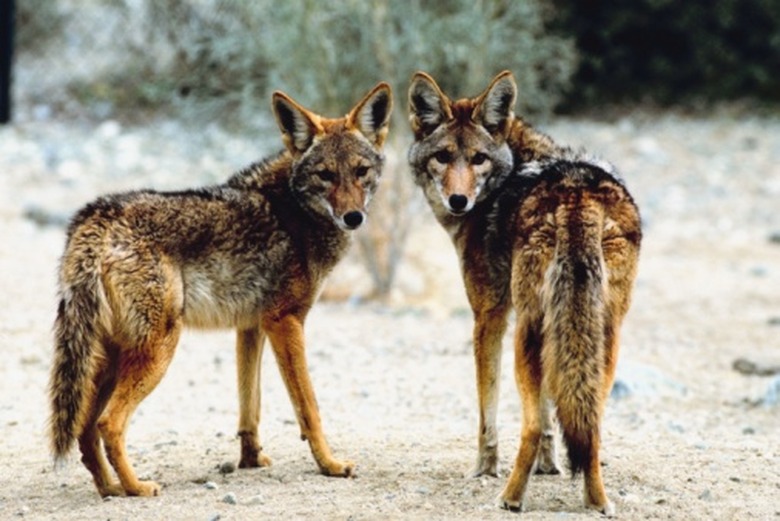Tropical Desert Animals & Plants
Tropical deserts are among the hottest and driest locations on the planet. The deserts of Baja California, such as the Senora, and the interior deserts of Mexico are considered tropical desert climates. Despite the harsh conditions that sometimes result in triple-digit temperatures and some years with only a trace of rainfall or less, there are plants and animals that survive here. These species are specially equipped to handle the environment the tropical desert provides.
Coyote
Coyote
The coyote is one of the world's most versatile animals. They survive and flourish in areas as far north as Alaska and as far south as Central America. In fact, coyotes can make it basically anywhere.
These animals are wolf-like in appearance, but are somewhat smaller than their canine cousins. They will eat just about anything depending on what is available. They hunt in packs to become more effective and have a strong sense of community or family. Coyotes will find food whether it is big game such as deer, fish in rivers, road kill, insects, snakes or plants. They are true omnivores. This helps them in environments like the tropical deserts of Mexico where food is often scarce.
Kangaroo Rat
Kangaroo Rat
The kangaroo rat is a furry and plump little creature with a round body, big eyes and a tail that is generally longer than its body. The overall length of the kangaroo rat is around 9 to 14 inches. The rat gets its name from the way it moves, hopping on its hind legs like a kangaroo.
This rodent is among the best-suited animals in the world for surviving in a low-water environment such as the tropical desert. They do not pant or sweat to keep cool like many other animals and they are unique in that they do not necessarily have to drink water to survive. Their bodies are able to convert dry seeds into water internally to keep them hydrated.
Creosote Bush
Creosote Bush
The deserts of the southwestern United States as well as the tropical deserts of Mexico are dotted with a ragged evergreen bush known as the creosote. The plains and lower slopes of the tropical desert is often the home to most of this shrubbery.
Bright yellow flowers top the ends of the long branches of the creosote bush. The leaves are waxy and thick and have adapted to the harsh heat and dry conditions of the tropical desert. They are useful in retaining moisture and fending off heat. In the tropical deserts, this bush is usually less than 4 feet tall, but can grow to 10 feet tall in wetter climates, according to the Desert USA website.
Bur Sage
Bur Sage
Triangle-leaf bur sage is a native plant of the Sonoran Desert. It often accompanies creosote growth between 1,000 and 3,000 feet above sea level. This small shrub grows to around 18 inches tall and is two feet wide, according to the Blue Planet Biomes website. The hairy leaves of the bur sage are usually around 1 inch long and gray and green in color. Yellow flowers also bloom from the plant.
The seeds of the bur sage have hooked spines on the shell that attach to passing animal's fur to spread the species. The bur sage is generally one of the first plants to grow in hot, sunny areas where other seeds are unable to survive.
Cite This Article
MLA
Morgan, Lee. "Tropical Desert Animals & Plants" sciencing.com, https://www.sciencing.com/tropical-desert-animals-plants-13427996/. 21 July 2017.
APA
Morgan, Lee. (2017, July 21). Tropical Desert Animals & Plants. sciencing.com. Retrieved from https://www.sciencing.com/tropical-desert-animals-plants-13427996/
Chicago
Morgan, Lee. Tropical Desert Animals & Plants last modified March 24, 2022. https://www.sciencing.com/tropical-desert-animals-plants-13427996/
